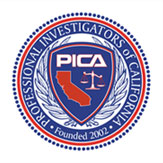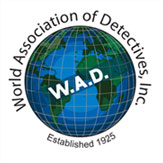The accuracy of data submitted by the requestor will directly determine the accuracy of results obtained. While the information we furnish is from reliable sources, its accuracy is not guaranteed. Use of available data may be affected by the Fair Credit Reporting Act ("FCRA"), the Fair Debt Collection Practices Act, the Graham-Leach-Bliley Act, and/or federal and state privacy laws. Our investigative reports are prepared by Excell Investigations, at the specific instance and request of our clients. Clients agree by accepting our reports that reports and information received from Excell Investigations, are strictly confidential, and are intended solely for our client's sole private, exclusive use. Any other use, communication, publication or reproduction of our reports, or any portion thereof, without the written consent of Excell Investigations, is strictly forbidden. By ordering and accepting delivery of this report, our client agrees to indemnify Excell Investigations, against any damages or claims resulting from any such unauthorized use. Our reports are not a recommendation, endorsement or approval of any kind, with respect to any specific transaction, decision or evaluation, and should not be relied on as such under any circumstances. All information contained in our reports is confidential and proprietary, i.e., our work product, hence our property as provider of our reports.
No warranty or guarantee of a particular outcome, result or recovery of information is promised or implied by Excell Investigations, or by the materials presented on ExcellInvestigation.com. Excell Investigations agrees to work to achieve the goals of any client work or engagement with aggressive, professional methods, within the bounds of the law.
All sales are final. There are no refunds.
Charges for Work Performed; Credit Card Charges
All orders placed for process service, document-related services, deposition-related services, subpoenas, document preparation and/or investigative services of any kind or description through this website will regarded by both Parties hereto as firm orders, not subject to cancellation after work has begun, other than as the Parties shall subsequently agree in writing. All credit card transactions will carry an extra four percent (4%) fee to cover bank credit card processing fees. By paying any advance or invoice, Client acknowledges that Client has reviewed and agreed to these terms and conditions. All sales are final and non-refundable. There is no guarantee of success.
























 Contact Us
Contact Us